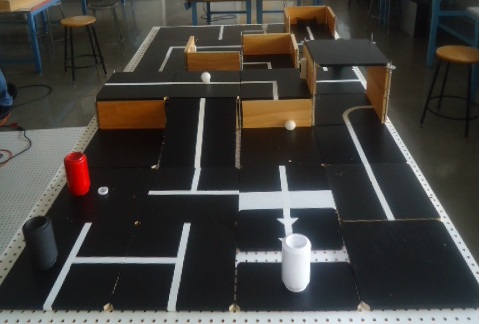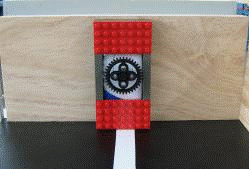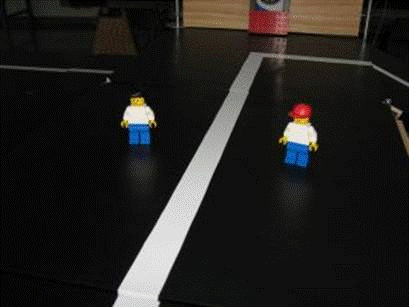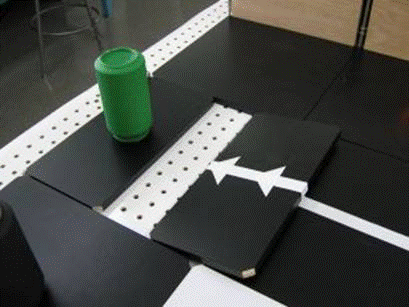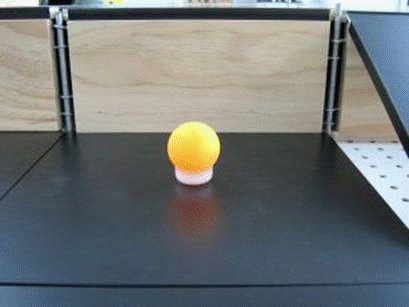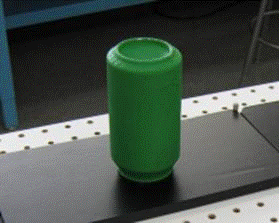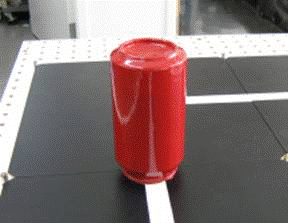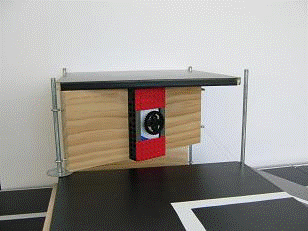Difference between revisions of "Disaster Relief Robot (DRR)"
(component testing -> benchmarking) |
(benchmark A, B, commission and extra credit are updated) |
||
| (17 intermediate revisions by 3 users not shown) | |||
| Line 1: | Line 1: | ||
{{SLDP: RFP|Disaster Relief Robot (DRR)}} | |||
{{SLDP: Real-life Scenarios (Robots)}} | |||
{{SLDP: Outside Materials (Robots)}} | |||
= Introduction and Overview = | |||
hurricane in the area of Bluesville County. The damage done by these disasters | In 2008, an Earthquake has damaged a nuclear power plant followed by a hurricane in the area of Bluesville County. The damage done by these disasters led to an emergency shutdown by the nuclear agency. | ||
led to an emergency shutdown by the nuclear agency. | |||
In order to ensure the safety of the workers in the plant, the president of the nuclear agency Billy Thai issued an RFP for the design and construction of a robot that will perform several tasks to shut down the facility. This disaster relief robot (DRR) must be both innovative and cost effective. President Thai anticipates using this robot on all of the power plants in the future if a disaster were to occur. | |||
the nuclear agency Billy Thai issued an RFP for the design and construction of a | |||
robot that will perform several tasks to shut down the facility. This disaster | |||
relief robot (DRR) must be both innovative and cost effective. | |||
President Thai anticipates using this robot on all of the power plants in the | |||
future if a disaster were to occur. | |||
= Specifications = | |||
Design a robot using Lego Digital Designer as your primary design tool. Your team must build a model of your design using the materials provided. A Mindstorms program that will direct the robot's movements must be created. A cost estimate of the robot's components must be provided. All revisions to the original design must be recorded and explained this includes technical design drawings, as well as cost estimates. All revisions to the Mindstorms program must be recorded and explained. | |||
The DRR must be able to navigate autonomously around the nuclear facility. The robot must perform ''at least'' five of the six tasks and return to base in 5 minutes. The robot must fit in a start area that is 25cm long by 25cm wide. There is no height restriction and all parts of the robot must be within ''and not overhanging'' the start area. | |||
robot | |||
These specifications ''must'' be met for final commissioning. Please refer to the course syllabus for all due dates. | |||
'''Note''': Any student who attempts to alter the course in any way, shape, or fashion (this includes lifting a tile to inspect its design) must meet with the Course Director to explain your attempt at academic dishonesty. | |||
< | == DRR Field == | ||
[[Image:DRR1.jpg|frame|center|Figure 1: DRR Navigation Field<br /><span style="color: red;">'''Note: The picture above contains one representation of this project description.<br />Actual course may be different from the one pictured above, but similar in objective.'''</span>]] | |||
< | [[Image:DRR2.jpg|frame|center|Figure 2: DRR Navigation Field<br /><span style="color: red;">'''Note: The picture above contains one representation of this project description.<br />Actual course may be different from the one pictured above, but similar in objective.'''</span>]] | ||
== DRR Tasks == | |||
# Cut power to facility — This is a required task. The power must be cut off in order to perform the other tasks. | |||
# Rescue scientists — This is a required task. The scientists have been injured and need to be sent to base for an ambulance. | |||
# Secure structure of the facility — Push into place the displaced concrete plate unleveled by the quake under which liquid waste is stored. | |||
# Refill backup power supply — Bring a fuel cell (ping pong ball) to the power supply container. | |||
# Dispose nuclear waste — Knock the nuclear waste (green can) off of the course. | |||
# Dispose empty container — Knock the used up container (black can) off of the course. | |||
The starting point is indicated by the tile in Figure 3: | |||
[[Image:DRR3.gif|frame|center|Figure 3: DRR Starting Point<br /><span style="color: red;">'''Note: The picture above contains one representation of this project description.<br />Actual course may be different from the one pictured above, but similar in objective.'''</span>]] | |||
[[Image:DRR3.gif|frame|center|Figure 3: DRR Starting Point<br>< | |||
The power switches look like these: | |||
[[Image:DRR4.gif|frame|center|Figure 4: Power Switch]] | [[Image:DRR4.gif|frame|center|Figure 4: Power Switch]] | ||
The scientists may be anywhere on the tile, they look like this: | |||
[[Image:DRR5.gif|frame|center|Figure 5: Scientists<br /><span style="color: red;">'''Note: The picture above contains one representation of this project description.<br />Actual course may be different from the one pictured above, but similar in objective.'''</span>]] | |||
[[Image:DRR5.gif|frame|center|Figure 5: Scientists<br />< | |||
< | The displaced concrete plate is indicated in Figure 6: | ||
[[Image:DRR6.gif|frame|center|Figure 6: Displaced Concrete Plate<br /><span style="color: red;">'''Note: The picture above contains one representation of this project description.<br />Actual course may be different from the one pictured above, but similar in objective.'''</span>]] | |||
< | Fuel cells are located around the DRR field and must be placed inside the power supply container, they look like this: | ||
[[Image:DRR7.gif|frame|center|Figure 7: Fuel Cell<br /><span style="color: red;">'''Note: The picture above contains one representation of this project description.<br />Actual course may be different from the one pictured above, but similar in objective.'''</span>]] | |||
[[Image:DRR8.gif|frame|center|Figure 8: Power Supply Container<br /><span style="color: red;">'''Note: The picture above contains one representation of this project description.<br />Actual course may be different from the one pictured above, but similar in objective.'''</span>]] | |||
There are different colored cans: | |||
[[ | [[Image:DRR9.gif|frame|center|Figure 9: Nuclear Waste<br /><span style="color: red;">'''Note: The picture above contains one representation of this project description.<br />Actual course may be different from the one pictured above, but similar in objective.'''</span>]] | ||
< | |||
< | [[Image:DRR10.gif|frame|center|Figure 10: Empty Container<br /><span style="color: red;">'''Note: The picture above contains one representation of this project description.<br />Actual course may be different from the one pictured above, but similar in objective.'''</span>]] | ||
< | Flammable waste containers must be avoided! This means that your robot must not touch this: | ||
[[Image:DRR11.gif|frame|center|Figure 11: Flammable Waste Container<br /><span style="color: red;">'''Note: The picture above contains one representation of this project description.<br />Actual course may be different from the one pictured above, but similar in objective.'''</span>]] | |||
< | However, non-toxic waste can be touched by the robot: | ||
[[Image:DRR12.jpg|thumb|center|300px|Figure 12: Non-toxic Waste Container<br /><span style="color: red;">'''Note: The picture above contains one representation of this project description.<br />Actual course may be different from the one pictured above, but similar in objective.'''</span>]] | |||
< | Since the facility was damaged, there may be loose walls: | ||
[[Image:DRR13.gif|frame|center|Figure 13: Loose Wall Power Switch<br /><span style="color: red;">'''Note: The picture above contains one representation of this project description.<br />Actual course may be different from the one pictured above, but similar in objective.'''</span>]] | |||
'''Please Note''': During commissioning, the instructors or your TA will make all judgments as to the successful completion of tasks. Protests will not be considered. | |||
== Important == | |||
A robot has successfully returned when any part of the robot crosses or overhangs the baseline. If the robot is returning an object to base, credit will be received when any part of the object crosses or overhangs the baseline. The object must be in base at the end of the trial run for credit to be received. Therefore, any retrieved objects should be removed from the robot autonomously or by a team member and placed within base right away. ''Objects knocked out of base accidentally by the robot and not pushed back autonomously do not receive credit!'' | |||
A team member may pick up the scientists and load them onto the robot by hand. The scientists may be removed from the robot by hand once they are within base. ''You may '''NOT''' touch the robot while you do this.'' | |||
The robot program may not be altered or switched during any part of the mission. Likewise, the robot must be fully autonomous and therefore cannot be touched by any person during testing. The robot must return to base after it has completed its tasks. | |||
== Extra Credit == | |||
Creativity and innovation are always rewarded. Original designs will receive extra credit. | |||
Extra credit will also be awarded to students who complete all six tasks and retrieve extra fuel cells. | |||
{{SLDP: Microsoft Project}} | |||
{{SLDP: Drawings (Robots)|14}} | |||
= Model = | |||
The following materials will be provided: | |||
# Mindstorms kit | |||
# One NXT/EV3 | |||
# Sensors | |||
# Motors | |||
The finished DRR footprint must not exceed 25cm × 25cm. There is no height limitation. | |||
Additional materials can be supplied by your TA. | |||
{{SLDP: Cost Estimate (Robots)}} | |||
{{SLDP: Milestones and Benchmarks}} | |||
{{SLDP: Milestone 1 (Robots)}} | |||
{{SLDP: Benchmark A}} | |||
* Cut power to the facility. | |||
* One required task. | |||
* Two optional tasks. | |||
{{SLDP: Milestone 2 (Robots)}} | |||
{{SLDP: Benchmark B}} | |||
* Both required tasks. | |||
* Three optional tasks. | |||
{{SLDP: Milestone 3 (Robots)}} | |||
{{SLDP: Commissioning}} | |||
* Both required tasks. | |||
* Three optional tasks. | |||
* Return to base. | |||
{{SLDP: Final Presentation}} | |||
* Problem statement | |||
* Solution overview | |||
* Company description and qualifications | |||
* Drawings | |||
* Mindstorms program | |||
be | * Cost estimate | ||
* Microsoft Project schedule | |||
* Video demonstration | |||
* Why should the company be awarded this contract? | |||
{{SLDP: Submission}} | |||
** Final presentation | |||
** Cover page and table of contents | |||
** Final Mindstorms program | |||
** Initial sketch | |||
** All the drawings of your design (initial through final) | |||
** Video | |||
** Final MS Project Schedule | |||
** Final cost estimate | |||
** Resume(s) (No fictitious resumes will be accepted.) | |||
{{SLDP: Early Acceptance}} | |||
{{SLDP: Late Delivery}} | |||
= Frequently Asked Questions = | |||
Our robot knocked down the green/black can(s) and they are just rolling around on the course, that’s good enough to count for credit, right? | |||
:No. You must knock the cans completely off the course. This means knock them down to the floor, or at least on the pegboard surrounding the tiles. | |||
The red and white cans aren’t part of any objectives so can we just move them out of the way? | |||
:No. Although the red and white cans are not part of any objectives, they have have designated spots on the course and must be there at the start of each trial run. Remember that your robot may not touch the red can at all, if it does, then your run is disqualified. | |||
{{Semester-Long Design Project}} | |||
Latest revision as of 20:00, 23 January 2017
Request for Proposal: Disaster Relief Robot (DRR)
This project reflects real life scenarios; the robot must be able to handle minor imperfections in the course.
Note: You should only use the materials contained in the price list for LEGO parts for robot projects. If you want to use other parts, get permission from your faculty member to do so, and also to determine the cost of the parts you want to use that are not in this price list.
Introduction and Overview
In 2008, an Earthquake has damaged a nuclear power plant followed by a hurricane in the area of Bluesville County. The damage done by these disasters led to an emergency shutdown by the nuclear agency.
In order to ensure the safety of the workers in the plant, the president of the nuclear agency Billy Thai issued an RFP for the design and construction of a robot that will perform several tasks to shut down the facility. This disaster relief robot (DRR) must be both innovative and cost effective. President Thai anticipates using this robot on all of the power plants in the future if a disaster were to occur.
Specifications
Design a robot using Lego Digital Designer as your primary design tool. Your team must build a model of your design using the materials provided. A Mindstorms program that will direct the robot's movements must be created. A cost estimate of the robot's components must be provided. All revisions to the original design must be recorded and explained this includes technical design drawings, as well as cost estimates. All revisions to the Mindstorms program must be recorded and explained.
The DRR must be able to navigate autonomously around the nuclear facility. The robot must perform at least five of the six tasks and return to base in 5 minutes. The robot must fit in a start area that is 25cm long by 25cm wide. There is no height restriction and all parts of the robot must be within and not overhanging the start area.
These specifications must be met for final commissioning. Please refer to the course syllabus for all due dates.
Note: Any student who attempts to alter the course in any way, shape, or fashion (this includes lifting a tile to inspect its design) must meet with the Course Director to explain your attempt at academic dishonesty.
DRR Field
DRR Tasks
- Cut power to facility — This is a required task. The power must be cut off in order to perform the other tasks.
- Rescue scientists — This is a required task. The scientists have been injured and need to be sent to base for an ambulance.
- Secure structure of the facility — Push into place the displaced concrete plate unleveled by the quake under which liquid waste is stored.
- Refill backup power supply — Bring a fuel cell (ping pong ball) to the power supply container.
- Dispose nuclear waste — Knock the nuclear waste (green can) off of the course.
- Dispose empty container — Knock the used up container (black can) off of the course.
The starting point is indicated by the tile in Figure 3:
The power switches look like these:
The scientists may be anywhere on the tile, they look like this:
The displaced concrete plate is indicated in Figure 6:
Fuel cells are located around the DRR field and must be placed inside the power supply container, they look like this:
There are different colored cans:
Flammable waste containers must be avoided! This means that your robot must not touch this:
However, non-toxic waste can be touched by the robot:
Since the facility was damaged, there may be loose walls:
Please Note: During commissioning, the instructors or your TA will make all judgments as to the successful completion of tasks. Protests will not be considered.
Important
A robot has successfully returned when any part of the robot crosses or overhangs the baseline. If the robot is returning an object to base, credit will be received when any part of the object crosses or overhangs the baseline. The object must be in base at the end of the trial run for credit to be received. Therefore, any retrieved objects should be removed from the robot autonomously or by a team member and placed within base right away. Objects knocked out of base accidentally by the robot and not pushed back autonomously do not receive credit!
A team member may pick up the scientists and load them onto the robot by hand. The scientists may be removed from the robot by hand once they are within base. You may NOT touch the robot while you do this.
The robot program may not be altered or switched during any part of the mission. Likewise, the robot must be fully autonomous and therefore cannot be touched by any person during testing. The robot must return to base after it has completed its tasks.
Extra Credit
Creativity and innovation are always rewarded. Original designs will receive extra credit.
Extra credit will also be awarded to students who complete all six tasks and retrieve extra fuel cells.
Project Schedule
A project schedule must be created in Google Sheets. Please refer to the template provided in your team Google Drive folder and our guide.
This schedule must include all tasks related to the project from the start of the project to Early or Final submission. The project schedule should include:
- Minimum of 20 tasks, excluding Milestones
- Milestones should be clearly indicated on the project plan (duration of zero days)
- Each task must include the person responsible for completing the task (resource names)
- Gantt chart must be displayed alongside the tasks list (fit onto one slide)
- Gantt chart must show a progress line
- Clearly state during the presentations whether the project is on-time, behind schedule, or ahead of schedule
- In milestone presentations, please present a “Project Status” slide, which should summarize key deadlines. You are not required to show your project schedule in these presentations
Drawings
All drawings and sketches should be made using LEGO Digital Designer (LDD). LDD can be installed for free from the LEGO website.
Using LDD, create four drawings of the robot: front, top, most detailed side, and a drawing of the gear train(s). Sensors, motors, and gears must be included in each drawing. If the robot does not use any gears, make sure to explicitly state that in your presentations.
Each revision of the design must be documented and all changes must be presented during Milestone presentations.
Model
The following materials will be provided:
- Mindstorms kit
- One NXT/EV3
- Sensors
- Motors
The finished DRR footprint must not exceed 25cm × 25cm. There is no height limitation.
Additional materials can be supplied by your TA.
Cost Estimate
Once a robot design is complete, a cost estimate must be generated that specifies the cost of all the materials and labor required for the construction of the design. Tabulate this cost information clearly in an Excel spreadsheet, using the materials cost list provided. Help in calculating the cost is available by reviewing how to plan the schedule and calculate costs for a project. The costs for the parts can be found on the price list for LEGO parts for robot projects.
Note: You should only use the materials contained in the price list for LEGO parts for robot projects. If you want to use other parts, get permission from your faculty member to do so, and also to determine the cost of the parts you want to use that are not in this price list.
The cost estimate should include the following:
- Labor cost breakdown with hours and rates
- Consolidate low-cost pieces: axles, beams, bricks, bushings, connectors, gears, plates
- Itemize high-cost pieces: controllers (EV3 brick), sensors, motors
- No decimal places; this is an estimate after all. Round appropriately
- Total cost must be shown in the bottom right corner
Notebook/Project Journal
While working on your project, you are expected to keep a record of all work done, as well as future plans and goals. In order to complete a Benchmark assessment, you must submit your notebook in .pdf format to the EG1004 website, as well as show your notebook to the Open Lab TA completing your assessment. A guide to writing the notebook, as well as a basic overview of its expectations, can be found here.
Milestones, Benchmarks, and Deliverables
As work is done on the project, three Milestone presentations will report on the project's progress. All of the items assigned in each phase of the project are called Benchmark deliverables. These deliverables often consist of a combination of written submissions, presentations, and demonstrations. Benchmark assessments evaluate the progress of the project.
Preliminary Design Investigation
The Preliminary Design Investigation (PDI) is extremely important, as it lays the groundwork for the project. It outlines the project idea, inspiration, and goals.
The PDI must include:
- Cover Page
- Project Overview
- Goals & Objectives
- Design & Approach
- Cost Estimate
- Project Schedule
- Relevant Pictures
An example PDI template can be found here. The PDI is due by Benchmark A. Do not forget to include the items listed above. Use this link to access the VEX PDI Rubric.
Milestone 1
See How To Give a Milestone Presentation for the format of a Milestone presentation.
Milestone 1 is a presentation of the PDI. It is important that it outlines the project goals and show that the project is realizable.
The Milestone 1 presentation must include:
- Company profile
- Company name
- Product name
- Company officer title(s)
- Mission statement
- Project objective
- What is the project about?
- What tasks is the company aiming to accomplish? (Benchmark A requirements)
- Overall design approach to complete objective
- Background information
- Why is the project happening?
- What does the audience need to know?
- Technical design description
- Preliminary conceptual drawing of robot design
- Rendered and digital sketches are acceptable, CAD not required
- What components will be used and why?
- Preliminary conceptual drawing of robot design
- Cost estimate
- Major components of design listed
- Miscellaneous category listed
- Projected labor listed
- Microsoft Project schedule
- Click here to access the guide on how to transfer a file
- Teamwork agreement summary
- Summary
- Overall assessment on current state of project
- Is the project on schedule? Is it on budget?
- Next steps and future tasks
Look Ahead: What tasks are planned between now and Milestone 2?
Benchmark Assessment A
Benchmarks evaluate the progress of the project. Benchmark A is due at the end of Model Shop Session II. There are penalties for not completing this on time. Refer to the EG1004 Grading Policy for more information.
To pass Benchmark A, the design must complete all of the following:
- Cut power to the facility.
- One required task.
- Two optional tasks.
Milestone 2
See How To Give a Milestone Presentation for the format of a Milestone presentation.
Milestone 2 Deliverables:
- Presentation:
- Project description
- Design approach
- Design changes since Milestone 1
- Mission statement
- CAD drawings: top, front, most detailed side, isometric, gear train
- Mindstorms program
- Updated cost estimate (previous and current). What changes were made?
- Updated Microsoft Project schedule (previous and current). What changes were made?
- Progress update: current state of the project (time, budget, etc.)
Look Ahead: What tasks are planned between now and Milestone 3?
Benchmark Assessment B
Benchmark Assessment B is due at the end of Model Shop Session III. There are penalties for not completing this on time. Refer to the EG1004 Grading Policy for more information.
To pass, complete all of the following tasks:
- Both required tasks.
- Three optional tasks.
Milestone 3
See How To Give a Milestone Presentation for the format of a Milestone presentation.
Milestone 3 Deliverables:
- Presentation:
- Project description
- Design approach
- Design changes since Milestone 2
- Mission statement
- CAD drawings: top, front, most detailed side, isometric, gear train
- Mindstorms program
- Updated cost estimate (previous and current). What changes were made?
- Updated Microsoft Project schedule (previous and current). What changes were made?
- Progress update: current state of the project (time, budget, etc.)
Look ahead: What tasks are planned between now and the completion of the project?
Commissioning
Projects must be commissioned before Submission. Refer to the syllabus for Submission deadlines. There are penalties for not completing this on time. Refer to the EG1004 Grading Policy for more information.
To pass, the design must complete all of the following:
- Both required tasks.
- Three optional tasks.
- Return to base.
Final Presentation
The Final Presentation will be a technical briefing, similar to the Milestones, but also serves as a sales presentation explaining why your company should be selected instead of the competition.
Your Final Presentation must include:
- Company profile
- Company name
- Employee profile, role(s), and qualifications
- Mission statement
- Problem statement
- Why is the project happening?
- What does the audience need to know?
- Project objective
- What is the purpose of your project?
- Who does your project help?
- What problem does your project solve?
- Project description
- Specify LEED certification
- Examples of LEED implementations in Revit
- Revit drawings
- All floor plan drawings
- Dimensions
- 1:240 scale
- Views of exterior of building: front elevation, side elevation, isometric elevation
- Dimensions
- Specify LEED certification
- Market and product viability
- Does your company have competitors?
- What makes your project unique?
- How does your design compare to competitors - cost, quality, features?
- Is the project versatile?
- What is the price of your project?
- Conclusion
- Reiterating project purpose
- Highlight project features
- Future goals of the company
- Why should your company be awarded this contract?
- Video pitch
- Price of project
- Walkthrough animation of building in Revit
- Embedded into Final Presentation
- Problem statement
- Solution overview
- Company description and qualifications
- Drawings
- Mindstorms program
- Cost estimate
- Microsoft Project schedule
- Video demonstration
- Why should the company be awarded this contract?
Submission
All SLDPs must be submitted online. Please visit this page for the link to the Project Submission form and each project’s individualized login information. To submit, login to the EG1004 website using this special login information. Submitting with an NYU account or any other account will generate an error. Components may be resubmitted at any time before the deadline. Please note that submission times are based on the most recent submission.
Please note the deliverables for this project are as follows. If any of the following items are omitted, there will be a penalty. Be sure to click "Submit" at the bottom of the form and allow sufficient time for uploading. The following list includes deliverable items that are required:
- Submission deliverables:
- Final presentation
- Cover page and table of contents
- Final Mindstorms program
- Initial sketch
- All the drawings of your design (initial through final)
- Video
- Final MS Project Schedule
- Final cost estimate
- Resume(s) (No fictitious resumes will be accepted.)
Late Submission
Late submission is not allowed. If a project does not Commission or receive Partial Commission by the deadline set forth in the syllabus, the project will not be allowed to submit and will receive a 0 for the project grade. To receive Partial Commissioning, two TAs must evaluate the project and determine its degree of completion according to the Commissioning requirements and the project will be given a grade accordingly. Please refer to the EG1004 Grading Policy for more information.
Frequently Asked Questions
Our robot knocked down the green/black can(s) and they are just rolling around on the course, that’s good enough to count for credit, right?
- No. You must knock the cans completely off the course. This means knock them down to the floor, or at least on the pegboard surrounding the tiles.
The red and white cans aren’t part of any objectives so can we just move them out of the way?
- No. Although the red and white cans are not part of any objectives, they have have designated spots on the course and must be there at the start of each trial run. Remember that your robot may not touch the red can at all, if it does, then your run is disqualified.
| ||||||||

